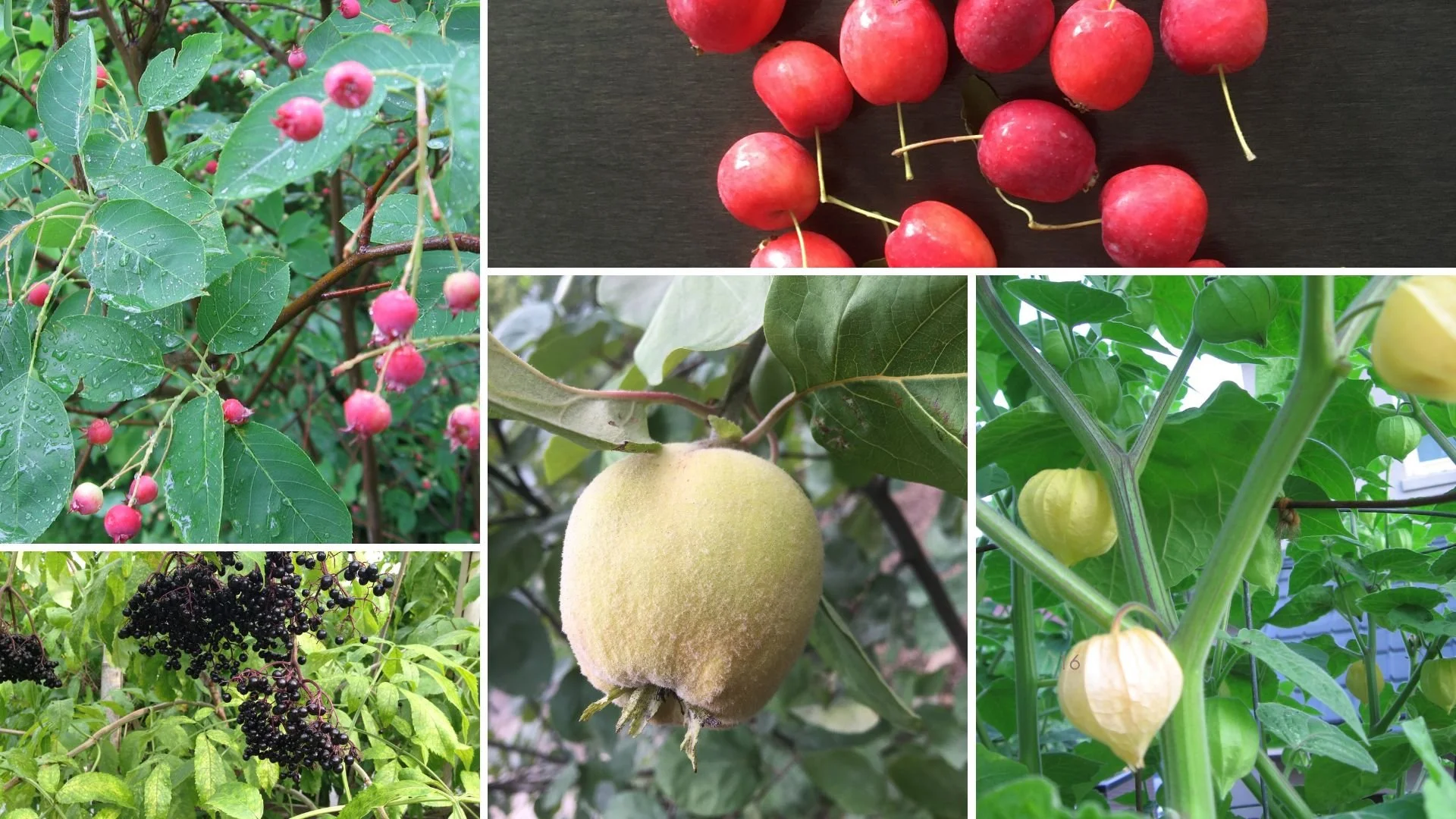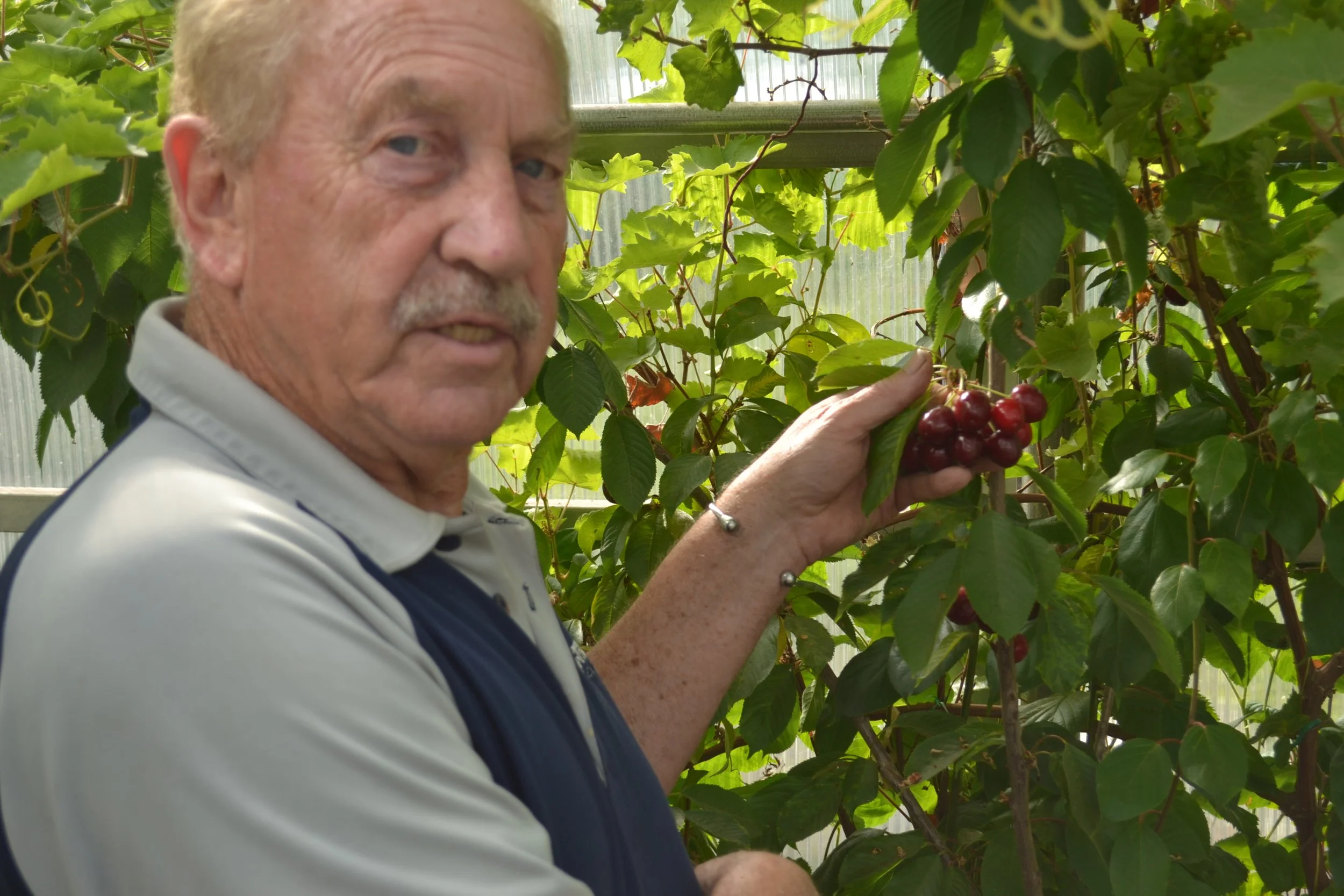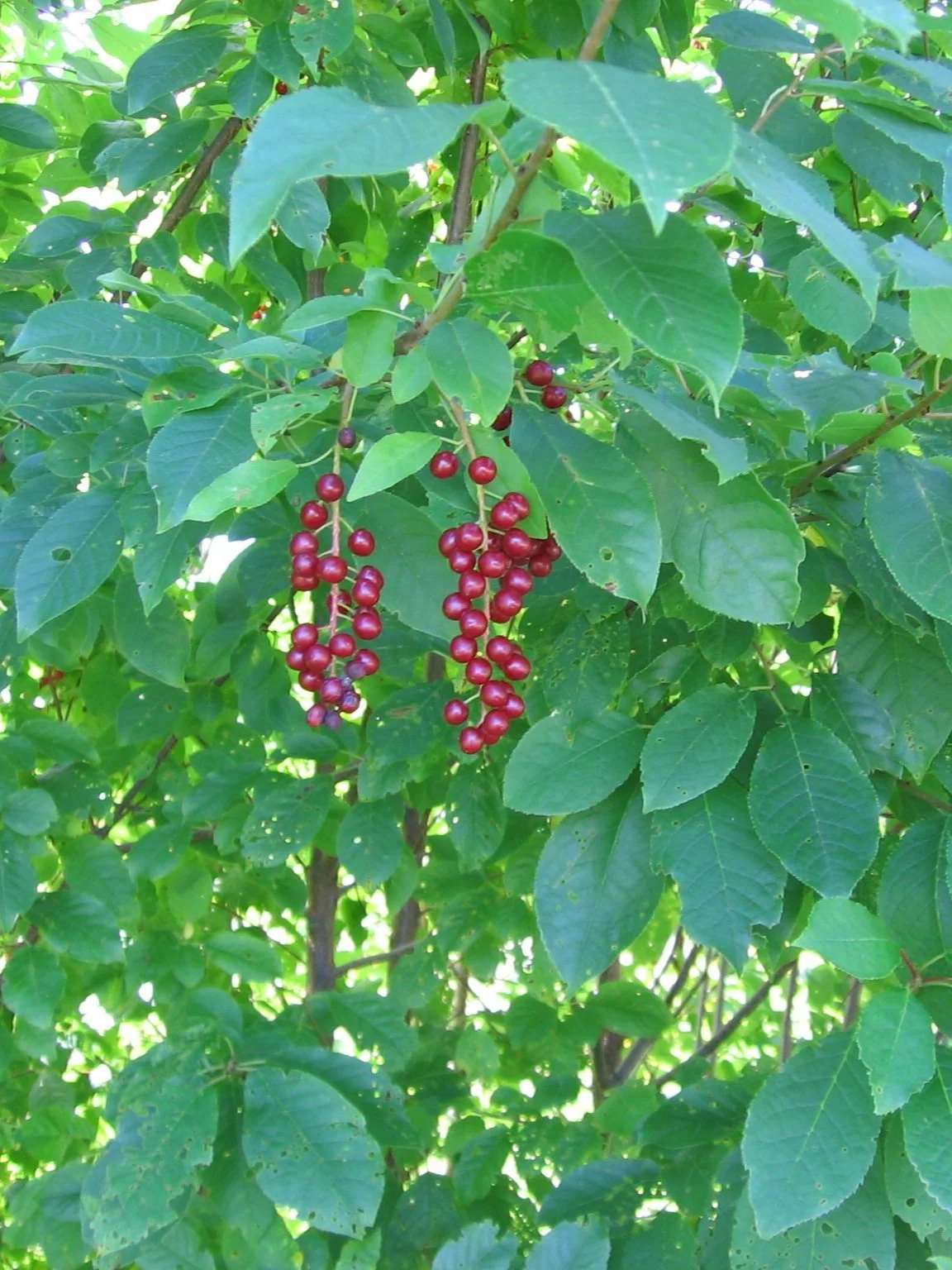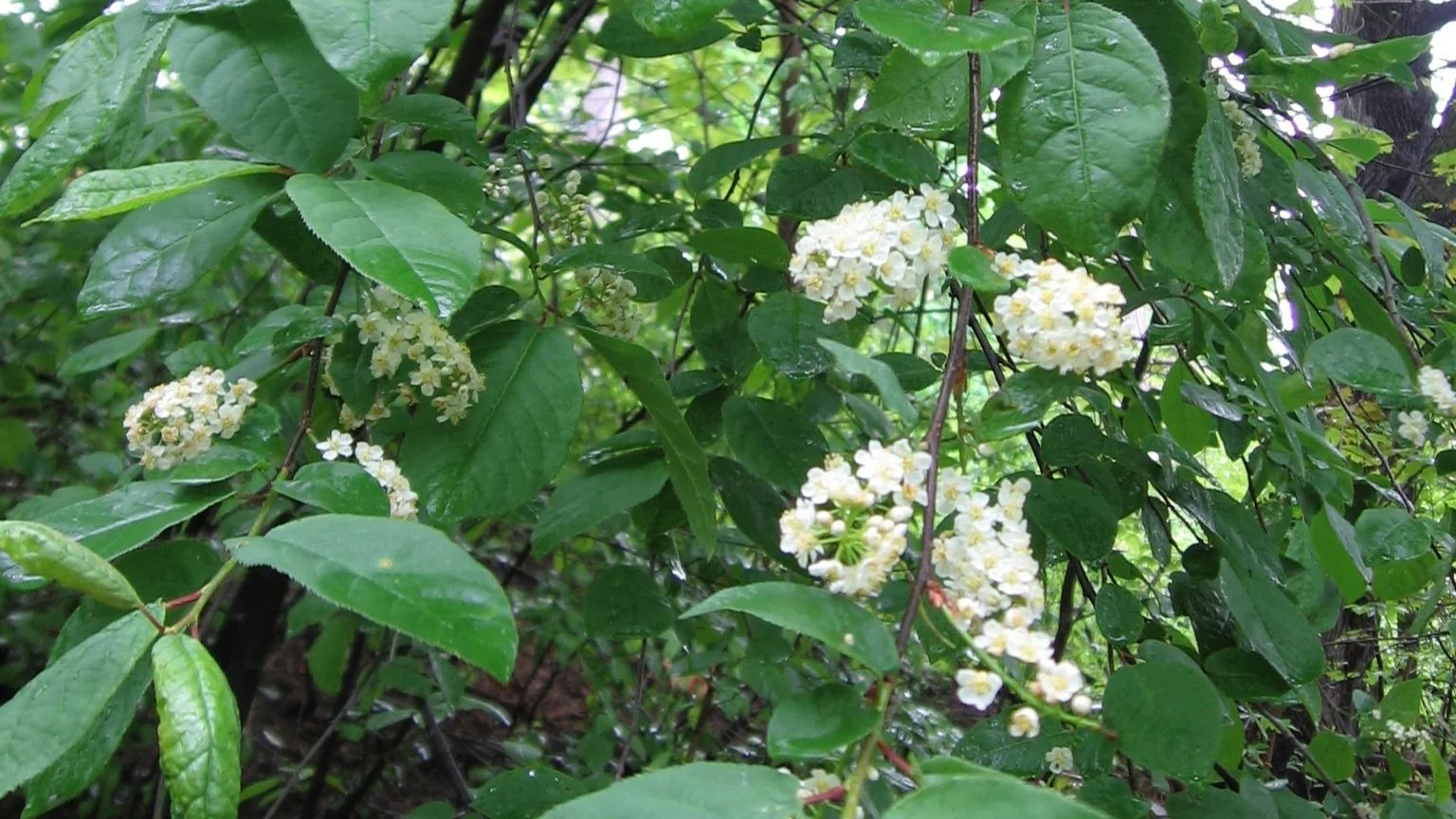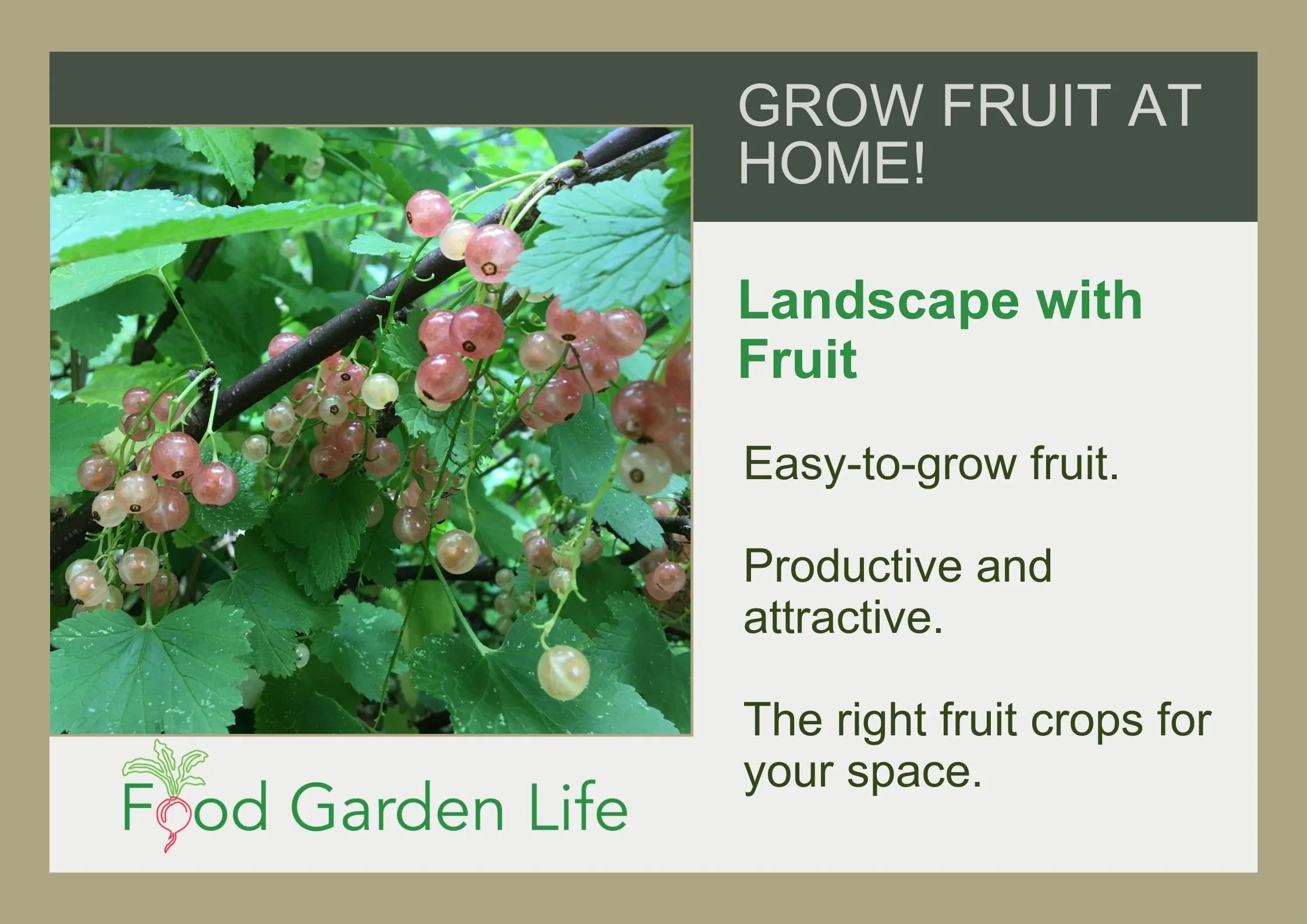5 Types of Cherry Bush to Grow in Edible Landscapes and Food Forests
By Steven Biggs
Grow Cherries in an Edible Landscape or Food Forest
A cherry bush is a great addition to an edible landscape or food forest. Here’s a Nanking cherry bush.
The noise!
If you’ve grown cherries, you might have had a flock of birds descend on a cherry tree. Starlings, especially, are so loud that I wonder how they manage to eat and squawk at the same time.
But they do. And they clean out a tree quickly.
The gardener can watch (and listen) – or, go look for a ladder to get up there and compete with the birds for the cherries!
A ladder… Who needs the bother of a ladder in an edible landscape or a food forest?
In a home garden or landscape setting, simplicity is key. Ladders are not simple. Nor are fruit trees that need shaping and regular pruning.
Luckily, there are a number of cherries that grow as bushes.
Some have larger fruit that you can pop right into your mouth. Others, long prized by foragers, have smaller fruit suited for jams, jellies, juices, and wine.
Keep reading for bush cherry crops you can add to your garden.
Benefits of a Cherry Bush vs. a Tree
A bush makes a lot of sense in a home garden or edible landscape.
When you have a bush with multiple stems, you can renew it by lopping of some of the stems so that new stems take over
More branches means more yield
Cherry insurance! (More branches means more chance of some surviving a challenging winter)
Foil the birds…because a bush is easy for you to quickly pick (and easier to net if you’re so inclined)
Cold hardiness, because low-growing branches are insulated by snow
In this article, I have 5 different cherries that you can grow as a bush in your edible landscape or food forest.
These all grow on their own roots (so no grafting required), and are all self-fertile—so you don’t need to worry about growing two varieties to get fruit.
Forget the Ladder…Grow a Cherry Bush
Dwarf Sour Cherry Bushes…from Saskatchewan
The University of Saskatchewan fruit breeding program has produced some great high-yielding hardy bush cherries. (So good that even the BBC wrote about them!)
The bush-like form and the high-quality fruit is the result of breeding Mongolian cherry with European sour cherry.
The bush-cherry cultivars in the University of Saskatchewan “Romance” series have different bloom times, bush size, and fruit colour.
Here are the cultivars:
Carmine Jewel
Romeo
Juliet
Valentine
Cupid
Crimson Passion
Here’s more about the story behind these cherries.
Here’s where you can find out more about ripeness.
Hear bush cherry expert Bob Bors talk about cherry breeding and haskaps at the University of Saskatchewan. https://www.foodgardenlife.com/show/grow-haskap
Landscape with Fruit
That’s easy to grow in a home garden!
Evan’s Cherry in Alberta
Dr. Ieuan Evans with Evans cherries.
Prunus cerasus
When Dr. Ieuan Evans moved to Alberta, he was disappointed to find very few people growing fruit.
But he heard about a very fruitful cherry tree near Edmonton, so he visited – and got pieces of it to propagate. (Just in time, as the property was slated for redevelopment.)
He gave away rooted suckers of this fruitful cherry as fast as he could grow them. It was very cold hardy AND very fruitful.
What’s now known as Evans cherry is an especially cold-hardy cultivar of the European sour cherry.
It can grow as a tree or a bush.
Hear Ieuan Evans talk about finding the Evan’s Cherry in Alberta.
Nanking Cherry Often Overlooked
Nanking cherry bush in flower.
Prunus tomentosa
This is the cherry bush that my grandfather grew in his Calgary yard.
It’s compact, extremely fruitful – and a beautiful addition to a landscape. I grow it in my front yard, and when it blooms, pedestrians always stop to take selfies in front of it.
These small sour cherries are delicious fresh. They’re also great for use in the kitchen. I like to make them into a cordial.
The fruit is smaller than the University of Saskatchewan and Evan’s cherries. But they’re absolutely prolific.
I have an article all about them. Find out more about Nanking cherry.
Chokecherry (a.k.a. Choke Cherry)
Chokecherry fruit grow in easy-to-pick clusters.
Prunus virginiana
Chokecherry is a native north American species that grows as a bush or small tree. There are a few cultivars, but most people know it because wild chokecherry plants arrives in gardens uninvited—thanks to critters that drop the seeds.
I have a patch of chokecherry in my garden. When a purple-leafed plant appeared, it was the perfect addition to an otherwise underused corner of my garden.
The flowers of chokecherry are a cluster that looks a bit like a bottle brush. And when those flowers become fruit, the pea-sized fruit are all in an easy-to-pick cluster.
This astringent fruit is aptly named. It has supreme pucker power! With processing though, the fruit is delicious. Use them for juice, jam, and syrup.
Hear Quebec agronomist Laurie Brown talk about growing and using chokecherry.
Chokecherry flowers
Pin Cherry (a.k.a. Pincherry)
Brightly coloured pin cherries light up the landscape!
(Prunus pensylvanica)
Pin cherry is another native North American species that grows as a shrub or small tree. I love the smooth, brownish-red bark.
Like chokecherry, the fruit are small. They’re more suited to fresh eating than chokecherry, giving you a tasty sour cherry taste without all the astringency.
While chokecherry flowers and fruit grow in a bottle-brush-like cylinder, pin cherries are on long, slender stems, with a few stems attaching to a branch in the same spot.
The bright red cherries light up a landscape. Use them to make jelly, juice, syrup, and wine.
Bush Cherry FAQ
Can I swallow the seeds?
All cherry seeds contain a cyanide compound, and consuming large quantities of fruit without removing seeds can make you sick. So spit out the pits!


